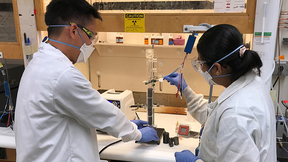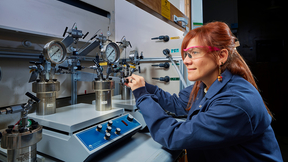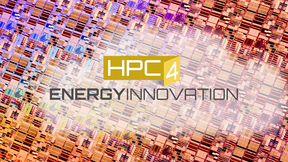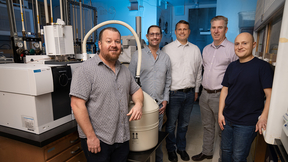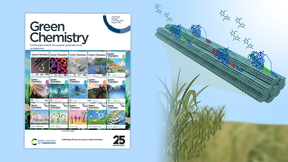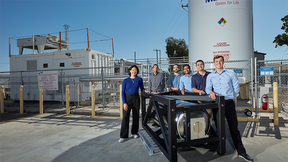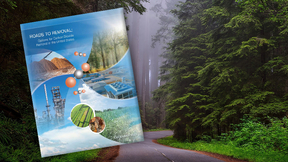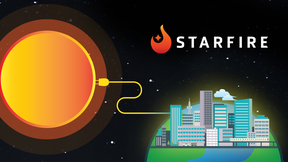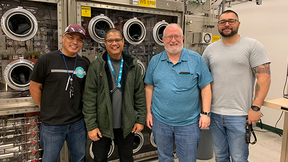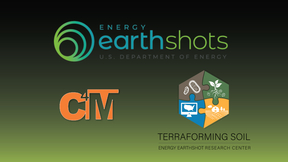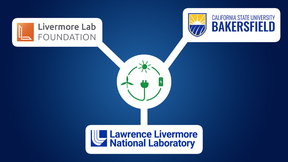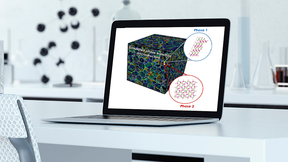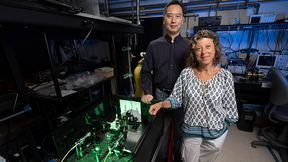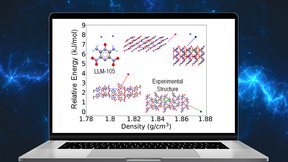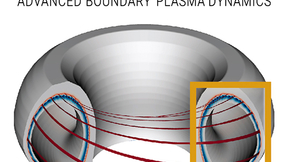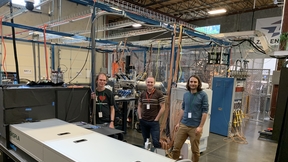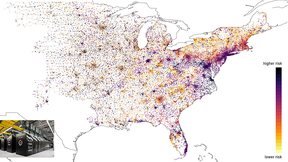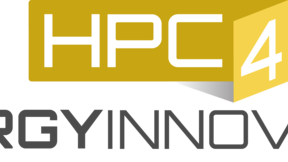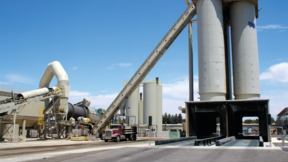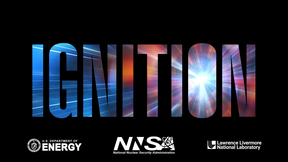Back
Four Lawrence Livermore National Laboratory (LLNL) researchers have partnered with Los Angeles-based SoCalGas and Munich, Germany-based Electrochaea to develop an electrobioreactor to allow excess renewable electricity from wind and solar sources to be stored in chemical bonds as renewable natural gas. When renewable electricity supply exceeds demand, electric-utility…
Lawrence Livermore National Laboratory (LLNL) has received $1 million to explore technologies that stimulate hydrogen production from mineral deposits found in the subsurface, including developing our understanding of hydrogen-producing geochemical reactions and how to enhance or control the rate of hydrogen production. The use of hydrogen fuel to offset fossil fuel…
The Department of Energy’s (DOE) High Performance Computing for Energy Innovation (HPC4EI) initiative today announced over $5 million in new funding for 13 industry partnerships, including a project led at Lawrence Livermore National Laboratory to develop more efficient optical cables. The awards, which stem from DOE’s Office of Energy Efficiency and Renewable Energy’s …
TATB (1,3,5-triamino-2,4,6-trinitrobenzene) is an important explosive compound because of its extensive use in munitions and world-wide weapons systems. Despite its importance, researchers have been trying to understand its response to temperature extremes for the past 50 years. A Lawrence Livermore National Laboratory (LLNL) team has uncovered a new thermal decomposition…
A Lawrence Livermore National Laboratory (LLNL) scientist is part of a research team shedding new light on how to access the sugars locked up in plant materials in order to convert byproducts into new feedstocks for production of fuels, materials and chemicals. Converting grasses, weeds, wood and other plant residues into sustainable products normally produced using…
Lawrence Livermore National Laboratory (LLNL) and Verne, a San Francisco-based startup, have demonstrated a cryo-compressed hydrogen storage system of suitable scale for heavy-duty vehicles. This is the first time cryo-compressed hydrogen storage has been demonstrated at a scale large enough to be useful for semi trucks, a milestone in high-density hydrogen storage…
Lawrence Livermore National Laboratory (LLNL) researchers, along with scientists from more than a dozen institutions, have completed a first-of-its-kind high-resolution assessment of carbon dioxide (CO2) removal (CDR) in the United States. The report, “Roads to Removal: Options for Carbon Dioxide Removal in the United States,” charts a path for the United States to achieve…
The U.S. Department of Energy (DOE) has awarded a four-year, $16 million project to a multi-institutional team led by Lawrence Livermore National Laboratory (LLNL) to accelerate inertial fusion energy (IFE) science and technology. This effort will be carried out by the newly established IFE Science and Technology Accelerated Research for Fusion Innovation and Reactor…
In the 2000s, Lawrence Livermore National Laboratory (LLNL) engineer Steve Hunter was asked to work on the concept for an Inertial Fusion Energy (IFE) power plant, not because of any laser or electronics knowledge that he has, but due to his firearms expertise. He needed to figure out how to inject a stream of targets into the target chamber, so that a constant source of…
Lawrence Livermore National Laboratory (LLNL) scientists will lead and co-lead projects in support of the Department of Energy’s (DOE) new Energy Earthshot program. The Energy Earthshots Initiative calls for innovation and collaboration to tackle the toughest topics in energy-related research. In January, DOE announced Office of Science funding for the Energy Earthshot…
Lawrence Livermore National Laboratory (LLNL), California State University, Bakersfield (CSUB) and the Livermore Lab Foundation (LLF) have signed an agreement to collaborate on advanced and clean-energy technologies, research opportunities and community partnerships that have the potential to shape the future of energy in the state and bring high-quality jobs to the region…
Lawrence Livermore National Laboratory (LLNL) will partner with outside institutions to improve diversity in the STEM workforce and provide training to underrepresented students and researchers under a pair of projects recently funded by the Department of Energy. With support from DOE’s Funding for Accelerated, Inclusive Research (FAIR) initiative, LLNL will partner with…
Lawrence Livermore National Laboratory (LLNL) researchers have racked up another top-notch year for securing grants through the Department of Energy’s (DOE) Technology Commercialization Fund (TCF) program. Matt Garrett, who was named earlier this year to lead the Lab’s Innovation and Partnerships Office (IPO), noted that the Lab’s engagements with industry are crucial for…
New research by Lawrence Livermore National Laboratory researchers and collaborators from Carnegie Mellon University (CMU) demonstrates that crystal structure prediction is a useful tool for studying the various ways the molecules can pack together, also known as ubiquitous polymorphism, in energetic materials. The research also shows promise of becoming an integral part…
A Lawrence Livermore National Laboratory-led project aimed at using computing tools to improve understanding of fusion plasma dynamics was among 12 projects recently awarded funding by the Department of Energy (DOE) to accelerate fusion power plant development. The four-year, multi-institutional Advanced Boundary Plasma Dynamics (ABOUND) project will receive $9.25 million…
Scientists at Lawrence Livermore National Laboratory (LLNL) collaborated with University of California San Diego (UCSD) to design, assemble, and field a portable optical Thomson scattering diagnostic system for the Advanced Research Projects Agency-Energy (ARPA-E) — a Department of Energy agency which supports private companies that are developing new ways to generate,…
Ensuring the nation’s electrical power grid can function with limited disruptions in the event of a natural disaster, catastrophic weather or a manmade attack is a key national security challenge. Compounding the challenge of grid management is the increasing amount of renewable energy sources such as solar and wind that are continually added to the grid, and the fact that…
The Department of Energy (DOE) today announced a new solicitation to connect industry partners with the high-performance computing (HPC) resources and expertise at DOE’s national laboratories to improve material performance and advance manufacturing processes for an equitable clean-energy future. Through the High-Performance Computing for Energy Innovation (HPC4EI)…
The Department of Energy (DOE) today announced $3.9 million for 13 public-private partnerships that will apply high performance computing (HPC) to manufacturing processes and advanced materials, including a Lawrence Livermore National Laboratory (LLNL) collaboration to decarbonize asphalt production. The awards, representing DOE’s fall 2022 round of funding for the High…
The U.S. Department of Energy (DOE) and DOE’s National Nuclear Security Administration (NNSA) today (Dec. 13) announced the achievement of fusion ignition at Lawrence Livermore National Laboratory (LLNL) — a major scientific breakthrough decades in the making that will pave the way for advancements in national defense and the future of clean power. On Dec. 5, a team at…

